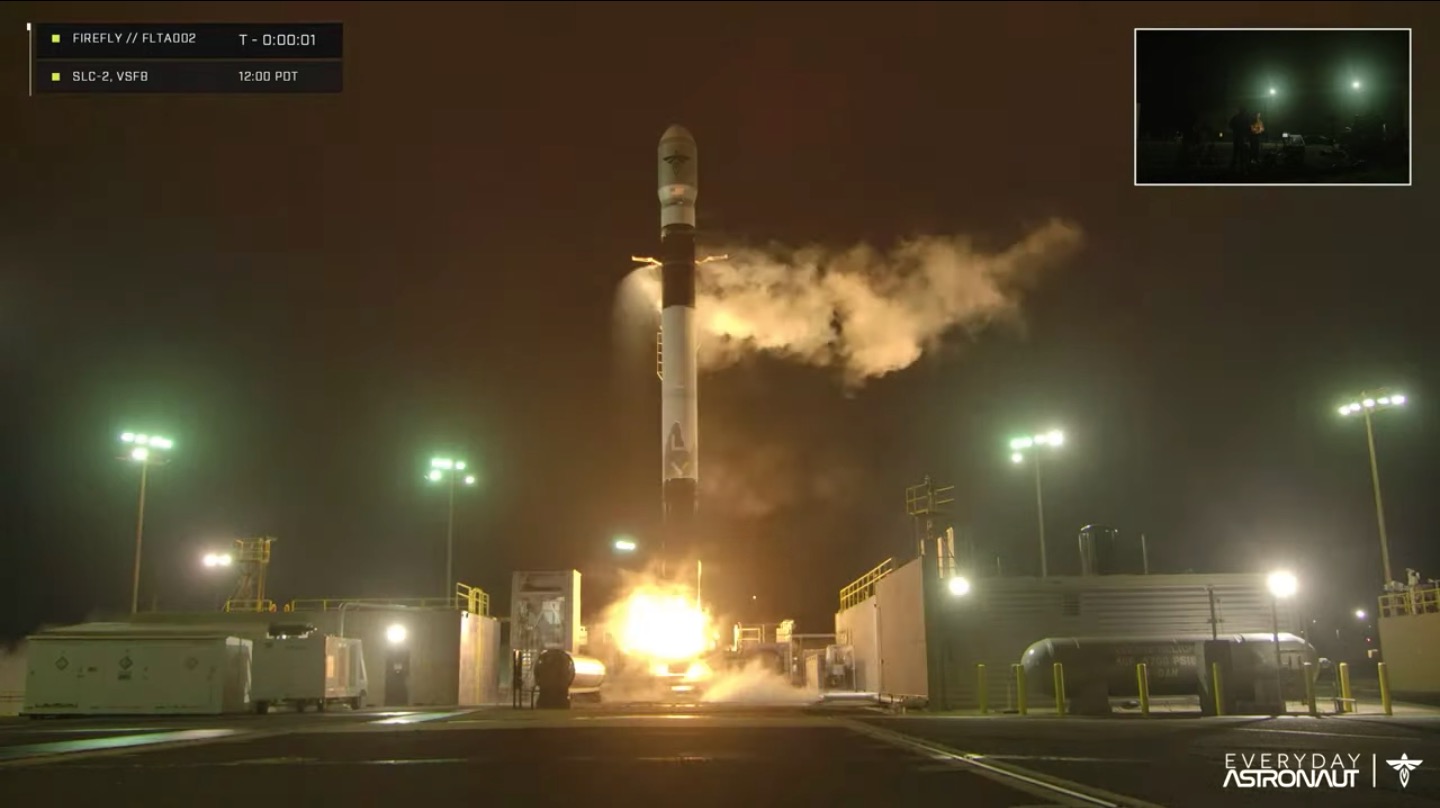Relive Firefly's 1st successful rocket launch with highlight reel (video)
Alpha now has an orbital launch under its belt.
Flames, whipping umbilical lines and dramatic stage separations mark a new highlight video of Firefly Aerospace's first launch to orbit.
Firefly's Alpha rocket made its dramatic space debut Oct. 1, reaching orbit for the first time and also deploying a clutch of small satellites there. (Each satellite was only the size of a loaf of bread.)
The video from Firefly's YouTube channel shows Alpha blasting off dramatically into the darkness from California's Vandenberg Space Force Base, with closeup views of its engines and fuel-line connections.
Firefly is advertising the power of the 95-foot-tall (29 meters) Alpha as it ramps up its customer recruitment. The rocket's next mission, Alpha Flight 3, is being integrated to carry a set of small satellites, as part of a NASA contract called Venture Class Launch Services Demonstration 2.
Video: Watch Firefly Aerospace test-fire its Alpha rocket
Firefly will also launch for the U.S. Space Force, signing a nearly $18 million deal Monday (Oct. 3) to loft a space domain awareness payload called Victus Nox. (This appears to translate from Latin along the lines of "conquer the night," although its exact meaning has not been disclosed by the Space Force's Space Domain Awareness program.)
Firefly's Oct. 1 mission was a demonstration flight called "Alpha Flight 2: To The Black." The name was a reference to it being the second orbital launch for Alpha, following an attempt from Vandenberg in September 2021. That first mission was lost after one of the rocket's first-stage Reaver engines shut down prematurely.
Breaking space news, the latest updates on rocket launches, skywatching events and more!
Outside observers have noticed a possible issue with "To The Black" as well. Alpha's upper stage apparently underperformed on Oct. 1, deploying the satellites lower than the desired 190-mile-high (300 kilometers) orbit, the space data publisher Seradata tweeted on Oct. 5.
Follow Elizabeth Howell on Twitter @howellspace. Follow us on Twitter @Spacedotcom or Facebook.

Elizabeth Howell (she/her), Ph.D., was a staff writer in the spaceflight channel between 2022 and 2024 specializing in Canadian space news. She was contributing writer for Space.com for 10 years from 2012 to 2024. Elizabeth's reporting includes multiple exclusives with the White House, leading world coverage about a lost-and-found space tomato on the International Space Station, witnessing five human spaceflight launches on two continents, flying parabolic, working inside a spacesuit, and participating in a simulated Mars mission. Her latest book, "Why Am I Taller?" (ECW Press, 2022) is co-written with astronaut Dave Williams.

